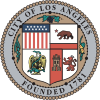Related Research Articles

Vietnamese Americans are Americans of Vietnamese ancestry. They comprise approximately half of all overseas Vietnamese and are the fourth-largest Asian American ethnic group following Chinese Americans, Indian Americans, and Filipino Americans. There are approximately 2.3 million people of Vietnamese descent residing in the U.S. as of 2023.
Greek Americans are Americans of full or partial Greek ancestry. The lowest estimate is that 1.2 million Americans are of Greek descent while the highest estimate suggests over 3 million. According to the US census, 264,066 people older than five spoke Greek at home in 2019.

Romanian Americans are Americans who have Romanian ancestry. According to the 2017 American Community Survey, 478,278 Americans indicated Romanian as their first or second ancestry, however other sources provide higher estimates, which are most likely more accurate, for the numbers of Romanian Americans in the contemporary United States; for example, the Romanian-American Network supplies a rough estimate of 1.2 million who are fully or partially of Romanian ethnicity. There is also a significant number of people of Romanian Jewish ancestry, estimated at about 225,000.
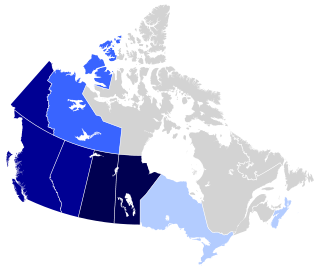
Ukrainian Canadians are Canadian citizens of Ukrainian descent or Ukrainian-born people who immigrated to Canada.

The Greek diaspora, also known as Omogenia, are the communities of Greeks living outside of Greece and Cyprus.
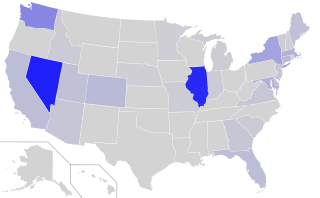
Bulgarian Americans are Americans of Bulgarian descent.

Russian Americans are Americans of full or partial Russian ancestry. The term can apply to recent Russian immigrants to the United States, as well as to those who settled in the 19th century Russian possessions in northwestern America. Russian Americans comprise the largest Eastern European and East Slavic population in the U.S., the second-largest Slavic population generally, the nineteenth-largest ancestry group overall, and the eleventh-largest from Europe.
Armenian Americans are citizens or residents of the United States who have total or partial Armenian ancestry. They form the second largest community of the Armenian diaspora after Armenians in Russia. The first major wave of Armenian immigration to the United States took place in the late 19th and early 20th centuries. Thousands of Armenians settled in the United States following the Hamidian massacres of the mid-1890s, the Adana massacre of 1909, and the Armenian genocide of 1915–1918 in the Ottoman Empire. Since the 1950s many Armenians from the Middle East migrated to the United States as a result of political instability in the region. It accelerated in the late 1980s and has continued after the dissolution of the Soviet Union in 1991 due to socio-economic and political reasons. The Los Angeles area has the largest Armenian population in the United States.
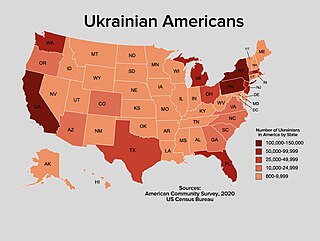
Ukrainian Americans are Americans who are of Ukrainian ancestry. According to U.S. census estimates, in 2021 there were 1,017,586 Americans of Ukrainian descent representing 0.3% of the American population. The Ukrainian population of the United States is thus the second largest outside the former Eastern Bloc; only Canada has a larger Ukrainian community under this definition. According to the 2000 U.S. census, the metropolitan areas with the largest numbers of Ukrainian Americans are: New York City with 160,000; Philadelphia with 60,000; Chicago with 46,000; Detroit with 45,000; Los Angeles with 36,000; Cleveland with 26,000; Sacramento with 20,000; and Indianapolis with 19,000. In 2018, the number of Ukrainian Americans surpassed 1 million.
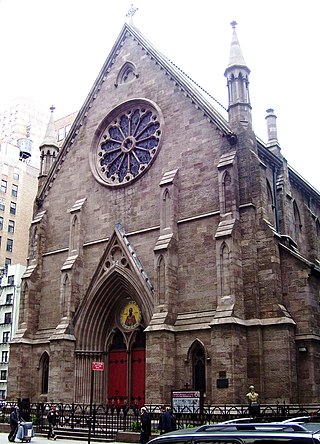
Serbian Americans or American Serbs, are Americans of ethnic Serb ancestry. As of 2013, there were about 190,000 American citizens who identified as having Serb ancestry. However, the number may be significantly higher, as there were some 290,000 additional people who identified as Yugoslavs living in the United States.

Belarusian Americans or White Russian Americans are Americans who are of total or partial Belarusian ancestry.
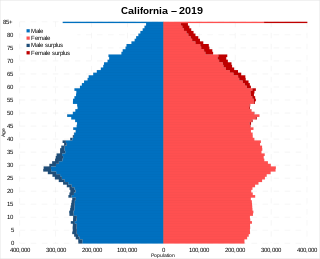
California is the most populated U.S. state, with an estimated population of 38.9 million as of 2023. It has people from a wide variety of ethnic, racial, national, and religious backgrounds.
Ethiopian Americans are Americans of Ethiopian descent, as well as individuals of American and Ethiopian ancestry. The largest Ethiopian American community is in the Washington, D.C. metropolitan area, with some estimates claiming a population of over 200,000 in the area; other large Ethiopian communities are found in Minneapolis–Saint Paul, Las Vegas, Seattle–Tacoma–Bellevue, Denver, the San Francisco Bay Area, Los Angeles, Salt Lake City, Columbus, and South Dakota.
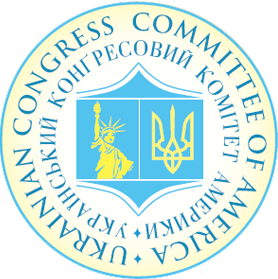
The Ukrainian Congress Committee of America or UCCA is a non-partisan non-profit national umbrella organization uniting over 20 national Ukrainian American organizations in advocating for over 1,000,000 Americans of Ukrainian descent. Its membership is composed of fraternal, educational, veterans, religious, cultural, social, business, political and humanitarian organizations, as well as individuals. Established in 1940, the UCCA maintains local volunteer chapters across the United States, with a national office based in New York City, as well as a Washington, D.C., news bureau, the Ukrainian National Information Service. The humanitarian aid committee, the United Ukrainian American Relief Committee, is headquartered in Philadelphia, Pennsylvania.

Ukrainian Argentines are Argentine citizens of Ukrainian descent or Ukraine-born people who reside in Argentina. Ukrainian Argentines are an ethnic minority in Argentina. Estimates of the Ukrainian and/or Ukrainian-descended population range from 300,000 to 470,000 people. Many Ukrainian Argentines are of Jewish descent. Currently, the main concentrations of Ukrainians in Argentina are in the Greater Buenos Aires area, with at least 100,000 people of Ukrainian descent, the province of Misiones, with at least 55,000 Ukrainians, and the province of Chaco with at least 30,000 Ukrainians. In Misiones Province Ukrainians constitute approximately 9% of the province's total population. In comparison to Ukrainians in North America, the Ukrainian community in Argentina tends to be more descended from earlier waves of immigration, is poorer, more rural, has less organizational strength, and is more focused on the Church as the center of cultural identity. Most Ukrainian Argentines do not speak the Ukrainian language and have switched to Spanish, although they continue to maintain their ethnic identity.

The demographics of Los Angeles are determined by population surveys such as the American Community Survey and the United States Census. According to U.S. Census Bureau estimates, Los Angeles' population was 3,979,576 in 2019.
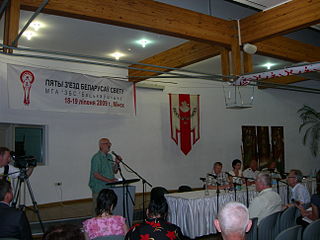
The Belarusian diaspora refers to emigrants from the territory of Belarus as well as to their descendants.

New York City is home to the largest Russian population and Russian-speaking population in the Western Hemisphere. The largest Russian-American communities in New York City are located in Brighton Beach and Sheepshead Bay in Brooklyn. Brighton Beach has been nicknamed Little Odessa due to its population of Russian-speaking immigrants from Ukraine and Russia.

Salvadorans are the second largest Hispanic group in the United States and the second largest foreign born group in Los Angeles. The main wave of immigrants came during the Salvadoran Civil War in the 1980s, in order to escape the violence and political and economic instability in the country. Since then, Salvadorans have continued to migrate to Los Angeles as well as other cities around the United States. The community is well established in Los Angeles and stands as an integral part of its cultural and economic life.
References
- ↑ "Persons of Ukrainian Ancestry* by Metropolitan Area: United States, 1990, 2000 and 2010**"
- ↑ Satzewich 2003, p. 26
- ↑ Satzewich 2003, p. 49
- ↑ Satzewich 2003, p. 86
- ↑ Satzewich 2003, p. 190-192
- ↑ Shevchuk 2003, p. 12
- 1 2 Wolowyna October 2009 p. 9
- ↑ Wolowyna October 2009 p. 12
- ↑ "Ukrainians by Year of Immigration"
- 1 2 3 "Age by Sex"
- ↑ "Number of Persons of Ukrainian Ancestry and of Persons Speaking Ukrainian or Russian at Home, by Metropolitan Area: United States, 2010*"
- ↑ "Number of Persons of Ukrainian Ancestry and of Persons Speaking Ukrainian or Russian at Home, by State: United States, 2010*"
- ↑ "Saint Andrew First Called Ukrainian Orthodox Church"
- ↑ "Saint Volodymir Ukrainian Orthodox Church - Home"
- ↑ "Nativity of the Blessed Virgin Mary Ukrainian Catholic Church - About - Google+"
- 1 2 Euromaidan Press "Euromaidan Press"
- ↑ "CAAU: Our Programs"
- ↑ "UCCA - Mission"
